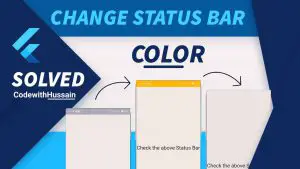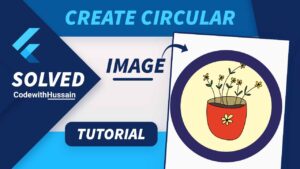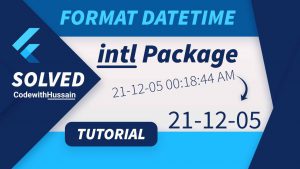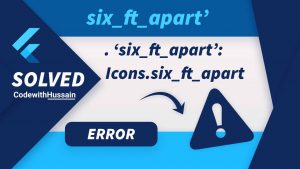The reduce() function in Dart is a powerful tool for condensing a collection of values into a single value. It’s particularly useful when working with lists or arrays. Here’s what makes reduce() special:
- Iterative Processing:
reduce()takes a list and applies a function to each element in turn, carrying forward a running result. This function combines two values at a time, gradually “reducing” the list to a single value. - Customizable Operations: You can define the operation to be performed on each element. This could be anything from summing numbers to merging strings or even complex data manipulation.
- Syntax: The basic syntax of
reduce()islist.reduce((currentValue, nextValue) => operation). Here,currentValueis the result accumulated so far, andnextValueis the current item in the list.
In this Article
Relevance of reduce() in Flutter Development
In Flutter, an open-source UI software development kit created by Google, Dart is the primary programming language. The reduce() function becomes particularly relevant in scenarios where you need to:
- Aggregate Data: Frequently in Flutter apps, you might need to aggregate data, like calculating the total of a shopping cart, combining user input, or processing data sets.
- State Management: In complex Flutter applications, managing the state effectively is crucial.
reduce()can simplify state operations, especially when dealing with collections of data. - Efficiency: Flutter developers often seek ways to write more efficient and cleaner code.
reduce()helps in achieving this by minimizing the need for verbose for-loops and intermediate variables for aggregation tasks.
The reduce() method in Dart is a fundamental part of functional programming within the language. It allows developers to process a collection (like a list) and condense it into a single value using a specified function. Here’s a closer look at how reduce() works and its key components:
How reduce() Works
- Iteration:
reduce()method works by iterating over the elements of a collection, such as a list. It takes two elements at a time and applies a function you define, then uses the result of this function as one of the two elements in the next iteration. This process continues until the collection is reduced to a single value. - The Reducer Function: The core of
reduce()is the reducer function you provide. This function defines how two elements of the list are combined into a single value. This function takes two arguments: the current accumulated value and the current element of the list. - Accumulator: Initially, the accumulated value is set to the first element of the list, and the current element is the second element. As
reduce()iterates through the list, the accumulated value is updated based on the result of the reducer function.
Key Parameters and Return Types
- Parameters:
- Reducer Function: This is a function you define that takes two arguments: the accumulated value so far and the current item from the list.
- Initial Value (Optional in some languages): In Dart, the initial value is implicitly the first element of the list, and the iteration starts from the second element.
- Return Type:
- Single Value: The final output of
reduce()is a single value, which can be of any type, depending on the operation performed in the reducer function. It could be a number, a string, an object, etc., depending on what the reducer function returns.
- Single Value: The final output of
Example of reduce() in Dart:
Consider a list of numbers, and you want to find their sum. Here’s how you can use reduce():
void main() {
List<int> numbers = [1, 2, 3, 4, 5];
int sum = numbers.reduce((curr, next) => curr + next);
print(sum); // Outputs: 15
}In this example:
- The list
numbersis iterated byreduce(). - The reducer function
(curr, next) => curr + nextadds the current accumulated valuecurrto the next item in the listnext. - Finally,
reduce()returns the sum of all elements in the list.
Basic Usage of reduce()
The reduce() method in Dart is particularly adept at handling common tasks such as summing up a list of numbers. Let’s explore a basic example to understand how reduce() operates in a simple context.
Example: Summing a List of Numbers
Consider a list of integers: [1, 2, 3, 4, 5]. Our goal is to find the sum of these numbers using reduce().
Create the List:
List<int> numbers = [1, 2, 3, 4, 5];Apply the reduce() Method:
int sum = numbers.reduce((currentSum, nextNumber) => currentSum + nextNumber);Here’s what happens step-by-step:
reduce()starts with the first two elements of the list.- The reducer function
(currentSum, nextNumber) => currentSum + nextNumberis applied. - In the first iteration,
currentSumis1(the first element), andnextNumberis2(the second element). The function returns3. - In the next iteration,
currentSumis3(previous result), andnextNumberis3(the third element). The function returns6. - This process continues until the end of the list is reached.
Final Result:
- After the last iteration,
reduce()returns the total sum of the list, which is15in this case.
Code Example
Here’s the complete Dart code for this example:
void main() {
List<int> numbers = [1, 2, 3, 4, 5];
int sum = numbers.reduce((currentSum, nextNumber) => currentSum + nextNumber);
print(sum); // Outputs: 15
}Explanation:
reduce()Function: Thereduce()method takes a function that defines how to combine each element of the list.- Reducer Function:
(currentSum, nextNumber) => currentSum + nextNumberis the function we pass toreduce(). It takes two parameters: the accumulated sum (currentSum) and the next number in the list (nextNumber). It returns their sum. - Process: Each iteration updates the
currentSumuntil the list is fully traversed. - Output: The final value of
currentSumis the sum of all elements in the list.
Advanced reduce() Techniques
The reduce() method in Dart isn’t limited to simple data types like integers or strings. It can be extremely powerful when working with complex data types, such as lists of objects. This capability allows for sophisticated data manipulation and aggregation, which is often required in more advanced Flutter applications.
Using reduce() with a List of Objects
Consider a scenario where you have a list of objects, each representing an order, and you want to calculate the total value of all orders. Here’s how you can use reduce() to accomplish this:
- Define the Order Class:
- First, create a class to represent an order. This class includes a property for the order value.
class Order {
double value;
Order(this.value);
}Create a List of Orders:
- Next, create a list of
Orderobjects.
List<Order> orders = [
Order(100.0),
Order(200.0),
Order(150.0),
Order(300.0)
];Apply reduce() to Calculate Total Order Value:
- Use
reduce()to sum up the values of all orders.
double totalValue = orders.reduce((total, order) => Order(total.value + order.value)).value;- In this example,
totalis anOrderobject representing the accumulated total. orderis the currentOrderobject in the iteration.- The reducer function adds the current order’s value to the total and returns a new
Orderobject with this accumulated value.
Code Example
Here’s the complete Dart code for this scenario:
class Order {
double value;
Order(this.value);
}
void main() {
List<Order> orders = [
Order(100.0),
Order(200.0),
Order(150.0),
Order(300.0)
];
double totalValue = orders.reduce((total, order) => Order(total.value + order.value)).value;
print('Total order value: \$${totalValue}'); // Outputs: Total order value: $750.0
}Explanation:
- Complex Data Type: The
Orderclass is a more complex data type compared to primitives like int or String. - Aggregation of Objects: The
reduce()method is used to aggregate the value properties of theOrderobjects. - Reducer Function: The function
(total, order) => Order(total.value + order.value)updates the accumulated total with each order’s value. - Result: The final output is the total value of all orders.
Common Mistakes with reduce()
The reduce() method in Dart is straightforward in its basic use, but there are common pitfalls that developers may encounter, especially when dealing with more complex scenarios or certain edge cases. Understanding these common mistakes can lead to more robust and error-free code.
1. Handling Empty Lists
One of the most common errors with reduce() occurs when it is used on an empty list. Since reduce() assumes the presence of at least one element to start the accumulation process, it throws an exception when applied to an empty list.
Example of the Issue:
List<int> numbers = [];
int sum = numbers.reduce((a, b) => a + b); // Throws an exceptionSolution:
- Check if the list is empty before using
reduce(). - Alternatively, use
fold()which allows specifying an initial value and works with empty lists.
Using fold() for Empty Lists:
List<int> numbers = [];
int sum = numbers.fold(0, (a, b) => a + b); // Returns 0, works with empty lists2. Misunderstandings Regarding the Accumulator Function
The accumulator function in reduce() is another area where misunderstandings can occur. It’s important to remember that the accumulator carries the result of the previous operation to the next. The return type of the accumulator function must match the type of elements in the list being reduced.
Common Misunderstanding:
- Assuming that the accumulator can return a different type than the list elements. This misconception can lead to runtime errors.
Example of a Misunderstanding:
List<int> numbers = [1, 2, 3, 4, 5];
String result = numbers.reduce((a, b) => a.toString() + b.toString()); // Error: The return type 'String' isn't 'int', as required by the closure's context.Solution:
- Ensure the return type of the accumulator function is the same as the list element type.
- If a different type is needed, consider using
fold()which allows for different initial and return types.
Performance Insights
When working with Dart, especially in the context of Flutter development, understanding the performance implications of different iterative methods, including reduce(), is crucial. Knowing when to use reduce() and how it compares to other methods can significantly impact the efficiency and speed of your applications.
Optimal Use of reduce()
reduce() is most efficient when you need to combine all elements of a collection into a single result based on a given function. It’s ideal for:
- Aggregating Values: For simple accumulations like sums, averages, or finding min/max values in a collection.
- Concatenation Operations: Combining a list of strings or similar types into a single value.
- Performance Consideration:
reduce()is typically faster and more concise than a manual loop for these operations, as it is optimized for such use cases.
However, there are scenarios where reduce() might not be the best choice:
- Empty Lists:
reduce()will throw an error on an empty list, whereas methods likefold()handle this gracefully by allowing an initial value. - Complex Accumulations: If the operation involves complex logic or requires maintaining additional state beyond a single accumulator, a manual loop or
fold()might be more suitable.
Comparison with Other Iterative Methods
- reduce() vs. fold():
- Both are similar, but
fold()is more versatile as it allows specifying an initial value, making it safer for empty lists. fold()can also produce a different type from the list elements, offering more flexibility.
- Both are similar, but
- reduce() vs. Manual Loops (for, forEach):
- Manual loops offer more control and are better for complex logic where you need to break early or manipulate multiple variables.
- However,
reduce()is more concise and declarative, making the code easier to read and maintain for straightforward aggregations.
- Performance Aspects:
- For large collections,
reduce()can be more performant due to Dart’s internal optimizations. - In critical performance scenarios, benchmarking is recommended to choose the best approach, as it can vary based on the specific use case and data size.
- For large collections,
Practical Applications of reduce() in Flutter
The reduce() method in Dart finds numerous practical applications in Flutter app development. Its ability to simplify data manipulation and aggregation makes it an essential tool for Flutter developers. Let’s explore how reduce() can be integrated into real-world Flutter scenarios, illustrated with a case study.
Scenario: E-commerce Shopping Cart
Consider a Flutter app for an e-commerce platform. One common feature is the shopping cart, where users add products they wish to purchase. Here, reduce() can be utilized to calculate the total price of items in the cart.
- Data Model:
- Assume a
Productclass, which includes properties likepriceandquantity.
- Assume a
class Product {
double price;
int quantity;
Product(this.price, this.quantity);
}Shopping Cart:
- The shopping cart is represented as a list of
Productobjects.
List<Product> cart = [
Product(29.99, 2), // Product with price $29.99 and quantity 2
Product(15.50, 1),
Product(42.00, 3)
];Calculate Total Price:
- Use
reduce()to sum the total cost of all items in the cart.
double totalPrice = cart
.reduce((total, product) => Product(total.price + (product.price * product.quantity), 1))
.price;Case Study: Implementing the Feature in a Flutter App
- UI Implementation: In the Flutter app, a screen displays the list of products in the shopping cart. Each product shows its price and quantity.
- Total Price Calculation: When the user views the cart, the total price is displayed at the bottom. This total is calculated using the
reduce()method, as shown in the code snippet above. - Update Mechanism: Whenever a product is added, removed, or its quantity is changed in the cart, the total price is recalculated using
reduce(), ensuring that the displayed total is always up-to-date. - Benefits:
- Simplicity: The
reduce()method offers a clean and efficient way to calculate the total, reducing the complexity of the code. - Maintainability: As the logic for calculating the total is encapsulated in a single operation, it’s easier to maintain and modify.
- Simplicity: The
Best Practices and Tips for Using reduce() in Flutter
Utilizing the reduce() method efficiently and effectively in Flutter requires understanding some best practices and being aware of potential pitfalls. Here are guidelines to help you make the most of the reduce() function in your Flutter development:
1. Understand Your Data
- Data Consistency: Ensure the data you’re processing with
reduce()is consistent. For example, all elements in the list should be of the same type or compatible types for the operation you’re performing.
2. Handle Empty Lists Gracefully
- Avoid Errors: As
reduce()throws an error on empty lists, always check if the list is empty before applyingreduce(). Alternatively, usefold()if you need a default value for empty lists.
3. Use Descriptive Naming
- Clear Function Parameters: Use meaningful names for the parameters in your reducer function. For instance, if you’re summing prices, use names like
totalPriceandcurrentPriceinstead of generic names likeaandb.
4. Keep It Simple
- Simple Reducer Functions: The function you pass to
reduce()should be simple and focused on a single task. If the logic becomes too complex, consider breaking it down or using other methods likefold()or loops.
5. Opt for Readability
- Readable Code: While
reduce()can make your code more concise, don’t sacrifice readability for brevity. If a loop makes your code more understandable, it might be a better choice.
6. Avoid Side Effects
- Pure Functions: The reducer function should be pure, meaning it doesn’t modify any external state and doesn’t depend on any external variables. This ensures predictability and reliability.
7. Performance Consideration
- Benchmark for Large Data Sets: If you’re working with large data sets, benchmark the performance of
reduce()compared to other methods. Whilereduce()is generally efficient, there might be cases where a loop orfold()is more performant.
8. Testing
- Write Tests: Especially for complex reducer functions, write unit tests to ensure they work correctly in all scenarios, including edge cases.
9. Error Handling
- Anticipate Exceptions: Plan for possible exceptions or errors in the reducer function. Ensuring that your code gracefully handles unexpected scenarios can prevent crashes and improve user experience.
10. Documentation
- Comment Your Code: If the operation you’re performing with
reduce()isn’t immediately obvious, add comments explaining the logic. This is particularly helpful when working in teams or revisiting your code after some time.
FAQ Section: Common Questions About reduce()
Q1: What happens if I use reduce() on an empty list?
- A1: In Dart, using
reduce()on an empty list will throw aStateError. To handle empty lists, either check the list before usingreduce()or usefold()with an initial value.
Q2: Can reduce() be used on lists of any type?
- A2: Yes,
reduce()can be used on lists containing any data type, including custom objects. However, the elements in the list should be compatible with the operation you’re performing in your reducer function.
Q3: How does reduce() differ from fold()?
- A3:
reduce()andfold()are similar, butfold()is more flexible as it allows specifying an initial value, making it suitable for empty lists. Additionally,fold()can produce a different type from the list elements, unlikereduce().
Q4: Is it possible to return a different data type from the reduce() operation than the type in the list?
- A4: No,
reduce()expects that the return type of the reducer function is the same as the type of elements in the list. If you need a different return type, consider usingfold().
Q5: Can reduce() be used for asynchronous operations?
- A5: No,
reduce()is not designed for asynchronous operations. If you need to perform asynchronous operations on a list, look into methods likeFuture.waitor asynchronous loops.
Conclusion
The reduce() function in Dart is a powerful yet sometimes underutilized tool in Flutter development. It excels in scenarios where you need to aggregate data from collections into a single value, offering both efficiency and readability. Key points to remember include:
- Versatility:
reduce()is versatile and can be applied to a wide range of data types, including custom objects. - Best Practices: Follow best practices such as handling empty lists, writing pure reducer functions, and prioritizing code readability.
- Understanding Its Limitations: Be aware of
reduce()limitations, such as its inability to handle empty lists or perform asynchronous operations.







